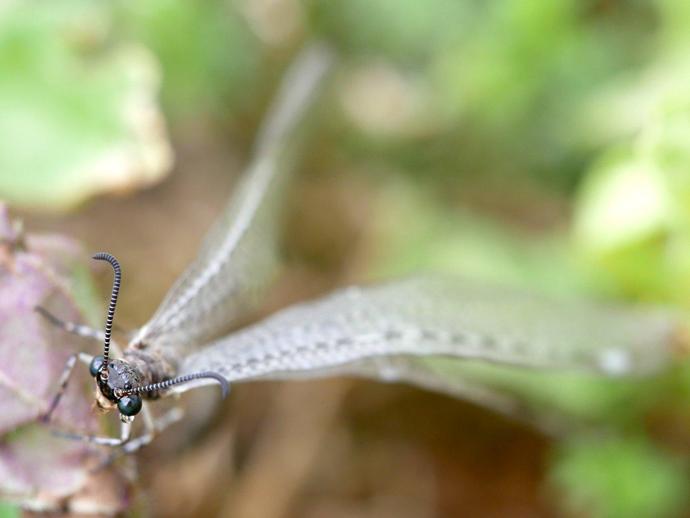May 29, 2020
Yesterday we looked at the larval antlion (family Myrmeleontidae), often referred to as the "doodlebug," which makes its home at the bottom of a sandy pit and devours any unfortunate critters that fall inside. Today we're looking at the adult form of the antlion, which looks a little bit different than you might expect!
When I found this adult antlion in my yard recently, I thought it was a damselfly; damselflies look similar to dragonflies, but they're generally smaller, skinnier, and fold their wings along their body when they're at rest instead of holding them straight out from their body. I was thrown by the fact that damselflies don't have prominent antennae, but this critter clearly does. I finally figured out (with a confirmation from VMNH Associate Curator of Invertebrate Zoology Dr. Kal Ivanov) that this was an adult antlion. While they superficially resemble damselflies, they aren't closely related, and they're weak fliers compared to damselflies. They're also nocturnal, and they usually flutter around at night looking for a mate. This one happened to get weighed down with dew the night before, which allowed me to snap a few glamour shots the following morning!
When the female antlion decides to lay her eggs, she is careful to pick a spot where the larvae will be able to thrive. To do this, she flutters around until she finds a spot with some sandy soil, and she tests the soil by tapping it with her abdomen before laying her eggs.
The closest relative of the antlion is the owlfly, which is another interesting-looking insect. I spotted one last summer, and hopefully I'll find another to share this year! #BenInNature
About this post: Social distancing can be difficult, but the next few weeks present a great opportunity to become reacquainted with nature. While he is working from home, Administrator of Science Ben Williams is venturing outdoors each day to record a snapshot of the unique sights that can be found in the natural world.
This post brought to you by VMNH Supporters Linda & Roscoe Reynolds.
NATURE PHOTO IDENTIFICATIONS
If you discover something in nature that you would like help identifying, be sure to message us right here on Facebook with a picture (please include location and date of picture) and we'll have our experts help you identify it!

 Hours & Admissions
Hours & Admissions Directions
Directions

